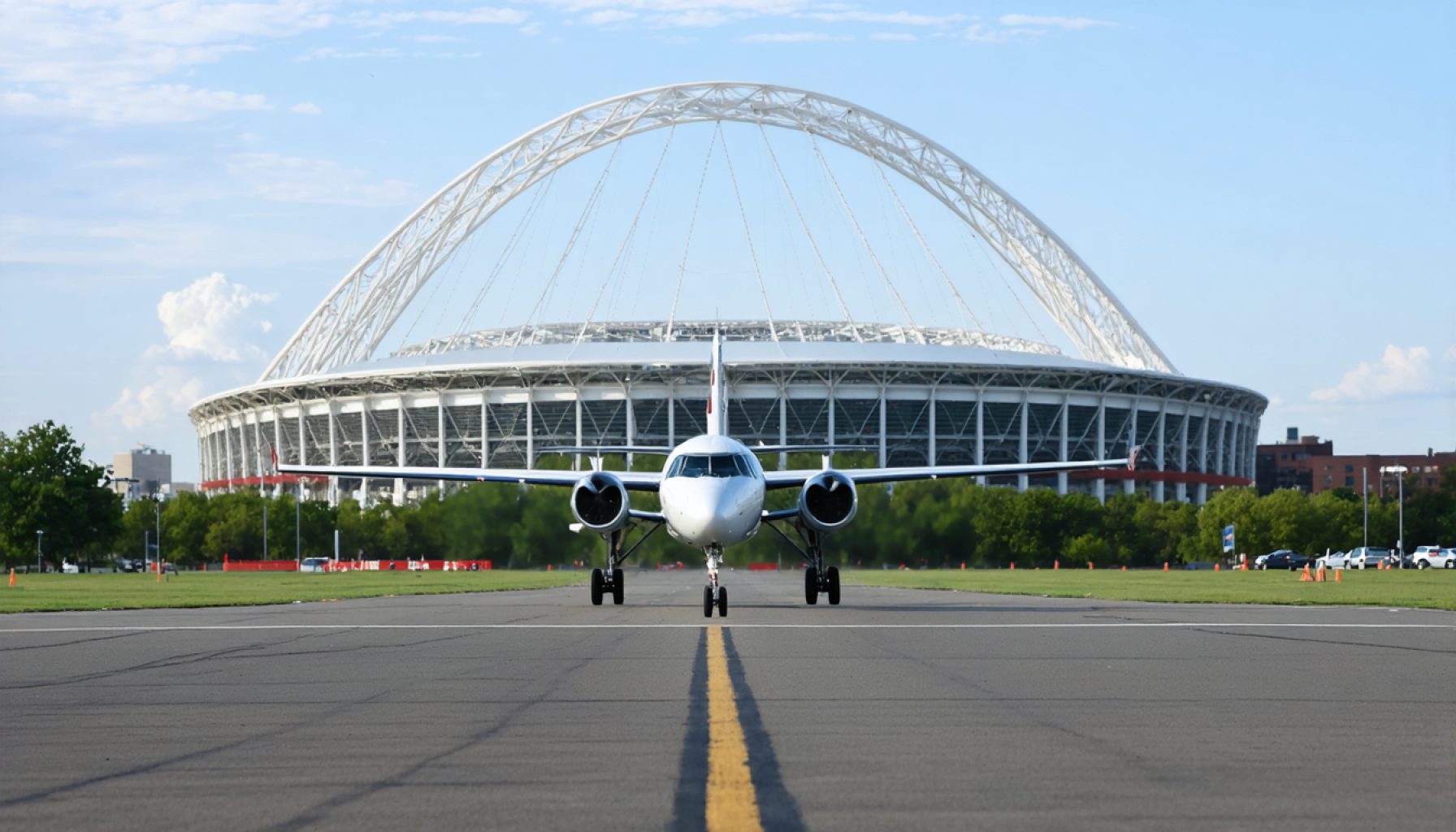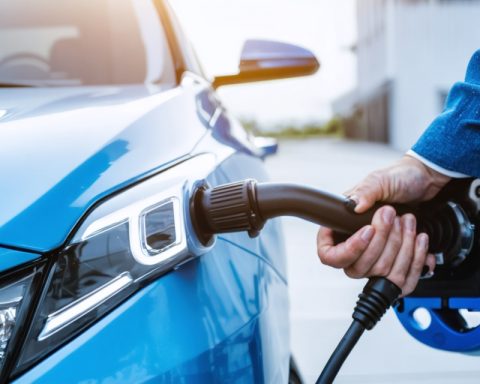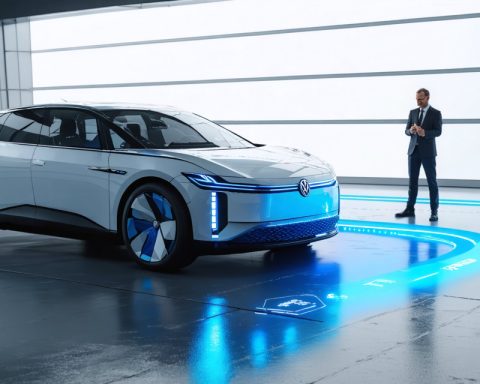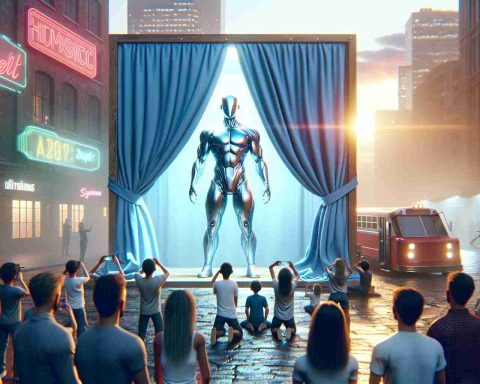- The RFK Stadium site in Washington, D.C. is undergoing a significant transformation, shifting from a historic sports venue to a revitalized urban area.
- A collection of historic aircraft will be relocated, symbolizing progress and making way for the comprehensive redevelopment of the stadium area.
- The redevelopment plan focuses on blending cultural, recreational, and residential spaces, aiming to create a vibrant community hub.
- The project highlights Washington, D.C.’s commitment to preserving history while embracing modernity and innovation in urban planning.
- The transformation serves as a testament to human ingenuity, reflecting the city’s ongoing evolution and its readiness for future stories.
- This redevelopment underscores the idea that cities, like their residents, are dynamic and ever-changing, with the potential for new beginnings.
A curious transformation is underway in Washington, D.C., as the city embarks on an ambitious journey to breathe new life into the historic RFK Stadium site. No longer just the echo of roars from past games, the site is poised to undergo a metamorphosis that may forever change the skyline of the nation’s capital.
Amidst this grand redevelopment scheme, an unexpected player has entered the scene: a collection of historic aircraft. These silent sentinels of the sky, each with its own tapestry of stories, are preparing for a new home. As part of the city’s broader vision, these aircraft are set to be relocated, making way for the comprehensive urban renewal of the RFK Stadium area.
While RFK Stadium itself may stir nostalgic memories of touchdowns and touchdowns, the surrounding area has been earmarked for a comprehensive revitalization that nods respectfully to the past while eagerly embracing the future. This reimagined space promises to blend cultural, recreational, and residential elements, making it a hub of vibrant activity and community engagement in D.C.
The decision to move the aircraft is more than a logistical shift—it is a symbol of progress, a tangible manifestation of the city’s commitment to rejuvenate and redefine its urban landscape. As each plane is meticulously transported, the city pays homage to its rich aviation history while paving the way for an innovative urban masterpiece.
This project is more than infrastructure; it is a testament to human ingenuity and resilience. It serves as a reminder that cities, much like the people who inhabit them, are constantly evolving. With each brick laid and each park designed, Washington, D.C. is not only preserving its legacy but also setting the stage for stories yet to be told.
In this unfolding chapter, the aircraft’s departure heralds not an end, but the thrilling start of a vibrant, new era. Here, amidst the echoes of cheering crowds and soaring planes, lies a powerful message: that the sky is truly the limit when a city dares to dream big.
DC’s Historic RFK Stadium Site: A Bold Vision for Urban Renewal
Overview of the RFK Stadium Redevelopment
The RFK Stadium in Washington, D.C., known for decades as a venue for sports and events, is on the brink of a major transformation. The redevelopment aims to invigorate the local area with new cultural, residential, and recreational amenities. The project not only revives an emblematic part of the city but does so with a forward-looking perspective that integrates modern urban needs with respect for history. Central to this plan is relocating historic aircraft that currently reside in the area, indicating a commitment to preserving aviation history while making space for innovation.
Historic Aircraft Relocation: What It Means
The removal of the historic aircraft collection is not merely a practical step in clearing space. It acts as a symbol of progress and the city’s dedication to advancing its metropolitan landscape. Moving these aircraft serves as a tribute to Washington, D.C.’s rich aviation legacy, preserving stories of a bygone era even as the city charts a path towards the future.
How the Space Will Be Transformed
The transformation of the RFK Stadium area is poised to reflect a blend of:
– Cultural infrastructure: Galleries, museums, and performance venues are expected to make the area a cultural hotspot.
– Recreational facilities: Parks, walking paths, and sports amenities aim to provide engaging outdoor activities for all ages.
– Residential developments: New housing options will cater to a diverse demographic, promoting urban living at the heart of the nation’s capital.
Key Elements of Urban Renewal Projects
– Sustainability: Emphasis on green spaces and eco-friendly designs is expected to be at the forefront of the development.
– Community Engagement: By focusing on multipurpose spaces, the redevelopment plan aims to foster community interaction and cohesion.
– Economic Impact: The project is anticipated to bring significant economic benefits through job creation and increased property values.
Market Forecasts & Industry Trends
Urban renewal projects like the RFK Stadium redevelopment are part of a global trend towards sustainable and livable cities. According to the Global Urban Development Conference, cities are increasingly investing in projects that provide resilient infrastructure and enhance quality of life, which in turn can attract investment and promote tourism.
Controversies & Limitations
While the potential benefits of the redevelopment are vast, there are challenges and controversies to consider:
– Historical Preservation vs. Modern Development: Balancing respect for the area’s history with the need for new development can lead to public debate.
– Displacement Concerns: New development might result in the displacement of existing communities; ensuring affordable housing options will be critical.
– Environmental Impact: Construction and increased urban activity might raise environmental concerns, which have to be addressed with careful planning and regulation.
Actionable Recommendations
– Stay Informed: Community members and stakeholders should participate in public consultations and stay informed about development progress.
– Sustainable Practices: Advocate for sustainable building practices and eco-friendly design in developing neighborhoods.
– Cultural Preservation: Support initiatives that aim to keep the historical narrative alive in the new developments.
Conclusion
Washington, D.C.’s ambitious redevelopment of the RFK Stadium site is setting the stage for a vibrant urban future. By blending historical preservation with innovative urban planning, the city is crafting a space that respects its past while looking optimistically towards the future. Residents and visitors alike can look forward to a dynamic part of the city that not only caters to various interests but also stands as a testament to the city’s evolving identity.
For ongoing updates and announcements, visit the official Washington, D.C. city website.











